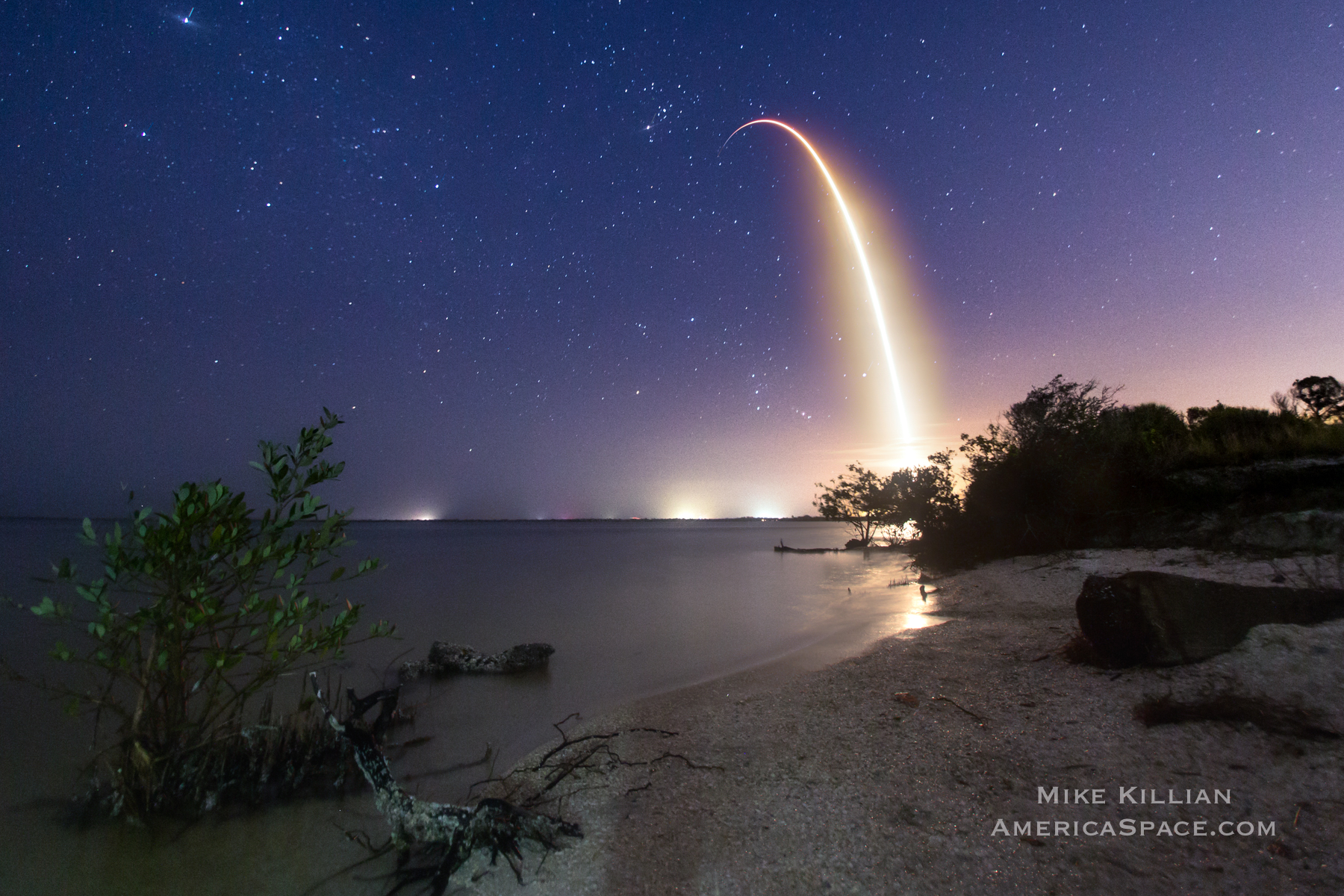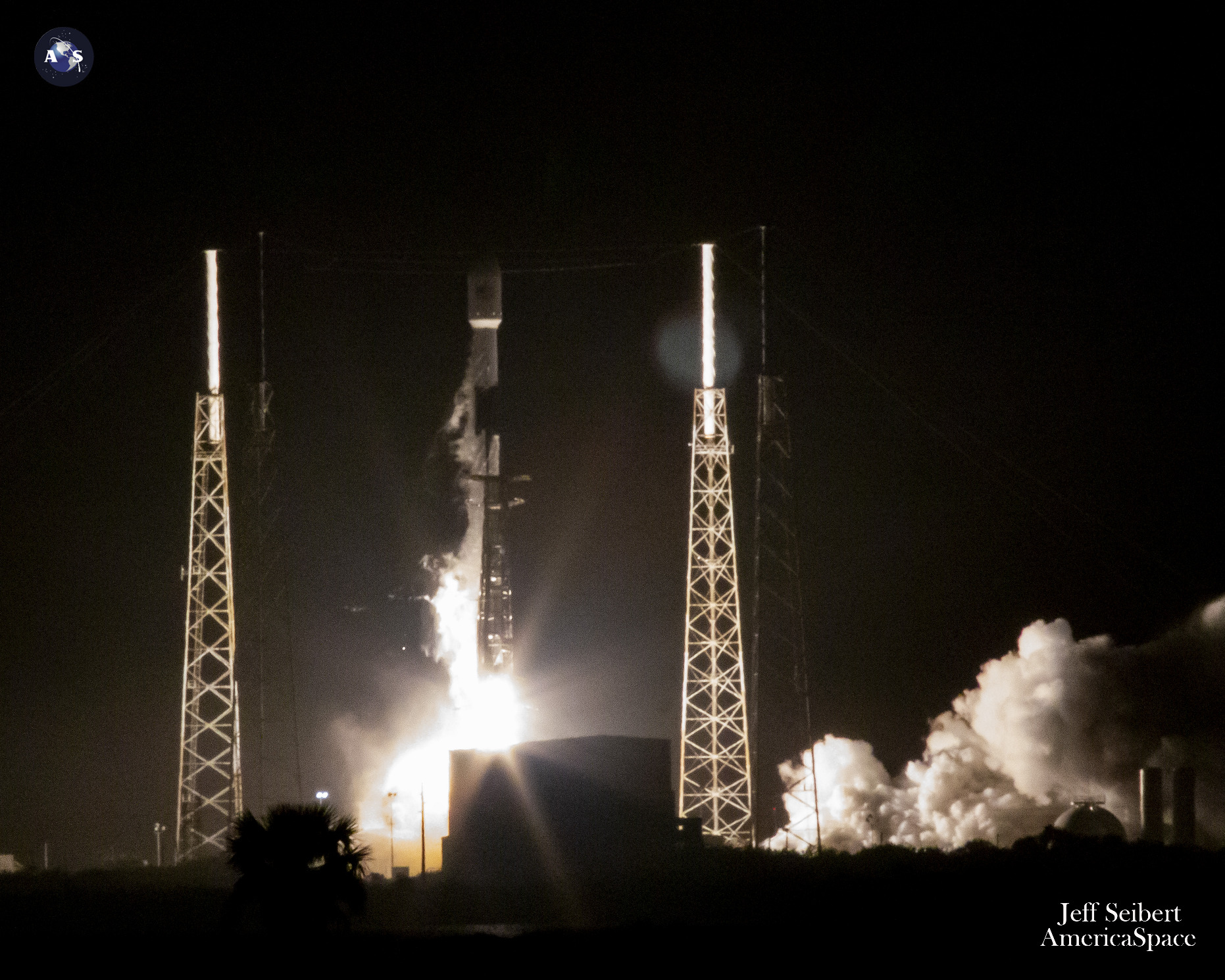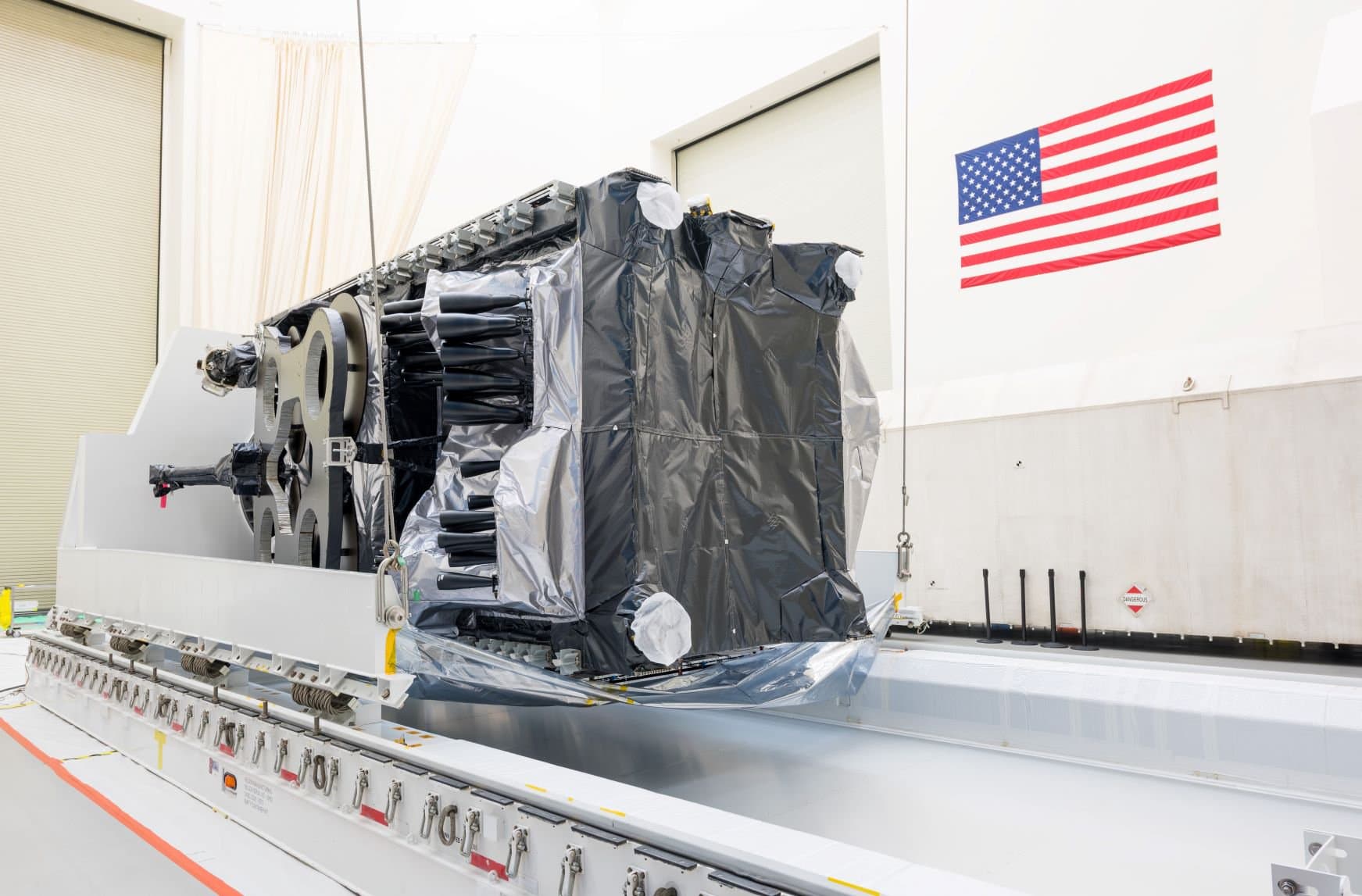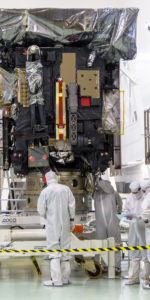
Less than two hours after local sunset, as darkness spread over Cape Canaveral Air Force Station, SpaceX successfully delivered a heavyweight payload towards geostationary transfer orbit tonight (Monday, 16 December), boosting the 15,000-pound (6,800 kg) JCSAT-18/Kacific-1 communications satellite. The satellite will provide 15 years of mobile telephone, data and broadband internet provision to a reported 600 million people across 25 nations in Southeast Asia and the Pacific islands. Liftoff of the 230-foot-tall (70-meter) Falcon 9 took place from Space Launch Complex (SLC)-40 at 7:10 p.m. EST, right on the opening of Monday’s 88-minute “launch window”.
Eight minutes later, the first-stage core—tailnumbered “B1056” and wrapping up its third mission—alighted smoothly on the deck of the Autonomous Spaceport Drone Ship (ASDS) about 400 miles (650 km) offshore in the Atlantic.
Tonight’s flight was the 13th SpaceX launch of 2019, coming on the heels of a smorgasbord of missions which have included three Dragon cargo visits to the International Space Station (ISS), two flights of the mammoth Falcon Heavy and the first unpiloted shakedown of the Crew Dragon. One more launch is planned before the end of December to carry aloft another 60 of SpaceX’s own Starlink satellites into low-Earth orbit to push the population of these small internet providers in low-Earth orbit to 180. It is expected that Starlink will produce an eventual network of around 12,000 satellites with a reported bandwidth potential to carry up to half of all backhaul communications traffic and up to a tenth of all local internet traffic in high-population-density areas.
As outlined in AmericaSpace’s preview article, the first-stage core for the JCSAT-18/Kacific-1 mission was B1056, which previously supported the CRS-17 and CRS-18 Dragon launches in May and July 2019. Blackened and scorched, it looked somewhat incongruous with a sparkling-clean second stage, as it was trundled from the Horizontal Integration Facility (HIF) to the SLC-40 pad surface on the morning of Friday, 13 December. Under gloomy skies, the nine Merlin 1D+ first-stage were ignited for a few seconds that afternoon as part of the customary Static Fire Test. The vehicle was then returned undercover in the HIF, where its bullet-like payload fairing—which housed JCSAT-18/Kacific-1—was installed. The stack was then returned to SLC-40 in the small hours of Monday morning and elevated to the vertical at 12:30 p.m. EST.

Weather conditions for Monday’s opening attempt were around 90-percent favorable, with a departing frontal boundary layer expected to yield only a few onshore showers during the launch window. Tempered only by a risk of violating the cumulus cloud rule, Monday offered a much better outlook than the backup date of Tuesday, where conditions were predicted to be 50-percent-favorable, with additional showers and the potential for storms.
As such, SpaceX pressed directly into the opening launch attempt and as darkness began to fall over the Cape the fueling of the Falcon 9 with liquid oxygen and a highly refined form of rocket-grade kerosene (known as “RP-1”) got underway at T-35 minutes. Heading into the final ten minutes of the countdown, the terminal autosequencer was initiated and the Merlin 1D+ engines were chilled, ahead of ignition. At T-2 minutes, the Air Force Range Safety Officer verified that all ground-side assets were “Go for Launch” and at T-60 seconds the Falcon 9 transferred to internal power in a phase known as “Startup”.

Three seconds before T-0, the Merlins roared to life and quickly ramped up to a maximum thrust of 1.5 million pounds (680,000 kg). Liftoff occurred on time, the Falcon 9 turning night into day as B1056 powered another payload uphill for the third time in seven months. It burned, as expected, for 2.5 minutes, before separating from the stack and commencing its high-speed return to Earth. Eight minutes after leaving Cape Canaveral—and for the 29th successful time since April 2016—the Falcon 9 core alighted smoothly on the deck of an Autonomous Spaceport Drone Ship (ASDS), in this case “Of Course I Still Love You”, located 400 miles (650 km) offshore in the Atlantic Ocean. All told, including ASDS and “land” landings, 47 Falcon 9 cores have successfully returned to Earth since December 2015.
Meanwhile, the second stage continued the boost to orbit under the impulse of its single Merlin 1D+ Vacuum engine to deliver the heavyweight JCSAT-18/Kacific-1 towards its high operational “slot”. The engine burned for 5.5 minutes, before shutting down and coasting for 19 minutes. JCSAT-18/Kacific-1 was then deployed from the top of the stack at 7:43 p.m. EST, some 33 minutes after launch to begin its 15-year mission. The satellite will eventually operate from an orbital “slot” at 150 degrees East longitude.
.
.
FOLLOW AmericaSpace on Facebook and Twitter!
.
.




